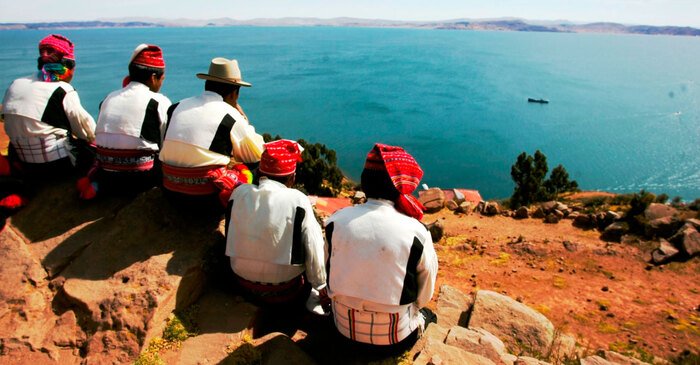Lake Titicaca was, according to Andean legend, the birthplace of civilization. Wiracocha, the creator god, brought light into a dark world by directing the Sun, Moon and stars to rise up out of the lake and take their place in the sky. With time the Sun and Moon had children who also rose from the depths of the lake. These new people were sent out from Titicaca to the four corners of the earth, with Manco Capac and his sister-wife Mama Ocllo and their family clan being sent off to inhabit the Cusco region. Inca legend believed that Manco was the first Inca and a direct descendent from the Sun.

The supposed location in Titicaca of the birthplace of the Sun, Moon and Manco Capac is actually on the Bolivian side of the lake on the islands not surprisingly named the Isla del Sol (Island of the Sun) and Isla de la Luna (Island of the Moon).

Regarded as the highest navigable lake at 12,580ft (3,825m), Lake Titicaca covers 3,861 square miles (10,000 sq km) and is shared by Bolivia and Peru. It has clear water, numerous islands and most importantly a place in Inca history. To many Peruvians, it is a revered and mythical place: legend has it that Manco Capac and Mama Ocllo, the founders of the Inca Empire, descendants of the sun, rose from the waters of the lake to create the ancient civilisation.













